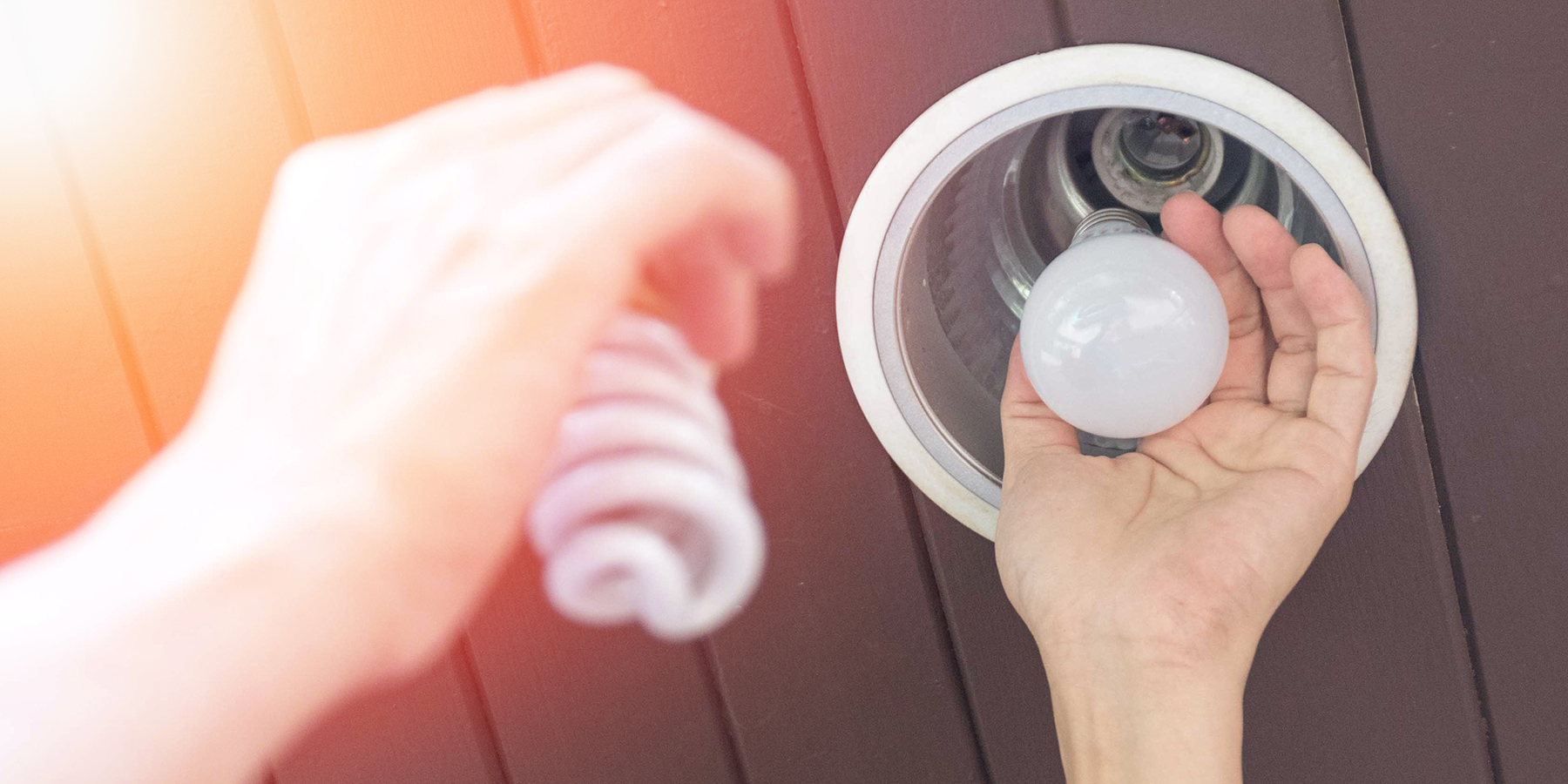CFL Bulb Disposal
Compact fluorescent light (CFL) bulbs, once popular for their energy efficiency, are now being phased out in favor of longer-lasting and environmentally friendly LED alternatives. If you still have CFL bulbs in use, proper disposal is important to prevent environmental hazards and ensure safe handling.

How to Clean Up a Broken CFL
Because CFLs contain a small amount of mercury, the EPA recommends the following clean-up and disposal guidelines:
1. Before you clean-up: air out
- Make sure all people and pets leave the room.
- Don’t allow anyone to walk through the area where the break occurred.
- Open a window.
- Exit the room and stay out for a minimum of 15 minutes or more.
- Shut off any centralized heating or cooling systems in the building.
2. Clean-up step: Hard surfaces
- Do not use a vacuum or broom to clean up.
- Carefully scoop up the broken glass and powder using stiff paper such as cardstock, cardboard or paperboard.
- Place the broken pieces and powder into a glass jar with metal lid or in a plastic bag that can be sealed.
- Use duct tape to pick up any leftover glass fragments and/or powder.
- Wipe the area clean with disposable wet wipes. Place the used wipes into the glass jar or plastic bag.
3. Clean-up step: Carpets or rugs
- Carefully scoop up the broken glass and place the pieces into a glass jar with metal lid or in a plastic bag that can be sealed.
- Use duct tape to pick up any leftover glass fragments and/or powder.
- Once you have picked up as much material as possible, a vacuum may be used to collect the remaining debris.
- Remove the vacuum bag (or empty and clean the canister).
- Place the bag or vacuumed debris into a plastic bag that can be sealed.
4. Clean-up step: Clothing, bedding and other material
- If the debris from the broken bulb is unable to be cleaned from the fabric, discard the clothing, bedding or other material.
- Do not wash the material. Mercury from the broken bulb can contaminate the washing machine and the water.
- You can, however, wash clothing or other materials that did not come into direct contact with the broken bulb. This includes any clothing being worn at the time the bulb broke, as long as direct contact wasn’t made.
- If shoes come into direct contact with powder from the bulb or broken glass, wipe them off with disposable wet wipes. Place the used wipes in a glass jar or plastic bag for disposal.
5. Disposal of clean-up materials
- Immediately place all materials used for clean up in an outdoor trash container. These can be disposed of with your normal trash pickup.
- Wash your hands after disposing of all clean-up materials and containers.
- The EPA advises, “Check with your local or state government about disposal requirements in your specific area. Some states do not allow such trash disposal. Instead, they require that broken and unbroken mercury-containing bulbs be taken to a local recycling center.”
6. Future cleaning of carpeting or rug:
- Air out the room during and after vacuuming.
- The next few times you vacuum, shut off any centralized heating or cooling systems and open a window before begining.
- Keep the air system off and the window open for at least 15 minutes after vacuuming.
Recycling and Disposal Options
Many state and local agencies have developed collection/exchange programs for mercury-containing devices, such as thermometers, manometers, and thermostats, and recycling programs for fluorescent light bulbs. Some counties and cities also have household hazardous waste collection programs. For information about these programs, contact your local officials to find out when and where a collection will be held in your area. Earth911 and the EPA also provide information about collection programs.


